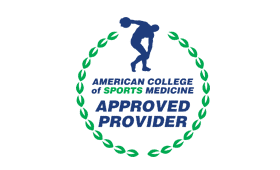5 STARS!!!
- Continuing Education
A Science-Based Blueprint for Creating Inclusive Yoga Classes
| Provider: | ACE - American Council On Exercise |
| Type: | Online Course |
| CEC Credits: | ACE 0.1 CECs , ACSM - American College Of Sports Medicine 1.0 CECs |
Get the best value
and buy this course
as part of a bundle.
Let an understanding of human movement guide the creation of your multi-level mind-body experiences. This webinar—led by renowned wellness expert Jessica Matthews, MS, E-RYT 500—will focus on establishing a blueprint for designing and delivering intelligently sequenced, inclusive yoga classes that serve a wide variety of class participants and leave a lasting impact.
You will learn:
- How to apply human movement principles to asana selection and instruction
- How to develop appropriate progressions and regressions of poses
- How to design intelligently structured and sequenced classes
Watch now free of charge and buy the continuing education quiz to earn 0.1 ACE CEC.
Reviews
GREAT!
Great class. Could not attend live. Great quality video. Well organized and easy to follow. As a yoga teacher, it brought to mind why I sequence in a "blueprint" method. Wonderful review of the primary movement patterns with examples of regression and progressions to cultivate an inclusive practice. This can be challenging, and I love her concepts of labeling the movement and not people. Great use of a "demo person" for visual learners. So well done. Jessica, please do a series of these classes. Thank you.
It was pertinent to my certification, as well as knowledge in the field for which I work.
I appreciated the refresher of the 5 primary movements, stability/mobility, adding in contact points, and not labeling students or postures beginners or advanced. The course lacked creativity and awareness on how we can actually make yoga classes accessible or inclusive. A block was the only example given for props and there wasn't much shared on variations of postures such as using a chair for your sun salutations, using a wall for stability/another contact point, or variations with blocks in downward dog.
Most Popular Recorded Webinar
The American Council on Exercise reserves the right to discontinue the sale and/or support of any continuing education course at any time, in order to cancel, correct, or update content based on current industry standards, guidelines, and/or technological advances. Notification will be given six months prior to expiration to allow for course completion. No refund will be given for expiring courses.
 CEC Power Pass
CEC Power Pass
